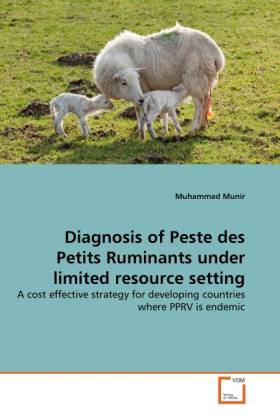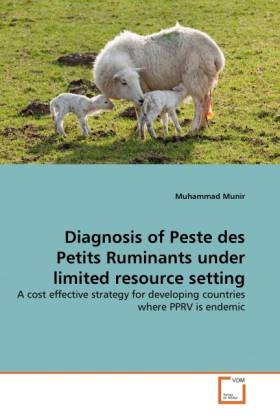
- Afhalen na 1 uur in een winkel met voorraad
- Gratis thuislevering in België vanaf € 30
- Ruim aanbod met 7 miljoen producten
- Afhalen na 1 uur in een winkel met voorraad
- Gratis thuislevering in België vanaf € 30
- Ruim aanbod met 7 miljoen producten
Zoeken
Diagnosis of Peste des Petits Ruminants under limited resource setting
Muhammad Munir
Paperback | Engels
€ 48,45
+ 96 punten
Omschrijving
PPR is a contagious disease of small ruminants and causes enormous economical losses due to its acuteness and misdiagnoses. The diagnostic tools are not readily available in all diagnostic laboratories especially in developing nations, where disease is endemic. Therefore, it is need to establish reliable, sensitive and affordable diagnostic tools, which will be promptly accessible at low cost, independent of laboratory type. Until this accomplishment, the dire need of time is to evaluate the different serological tests and to perform a parallel comparison with the aim to adapt these tests as a diagnostic method, which helps to diagnose and control PPR in developing nations. This reasons the primary objective of this book. This book would provide information about different assays by perform a parallel comparison to that of reference standards. This validation would guide the local authorities to choose the best-suited assay for the diagnosis of PPRV in the region. The book begins with a general introduction of the PPR virus and disease, handling practical issues, and step-by-step guide for each procedure. As a rational, a case study for each technique is presented.
Specificaties
Betrokkenen
- Auteur(s):
- Uitgeverij:
Inhoud
- Aantal bladzijden:
- 112
- Taal:
- Engels
Eigenschappen
- Productcode (EAN):
- 9783639380019
- Verschijningsdatum:
- 25/08/2011
- Uitvoering:
- Paperback
- Formaat:
- Trade paperback (VS)
- Afmetingen:
- 152 mm x 229 mm
- Gewicht:
- 176 g

Alleen bij Standaard Boekhandel
+ 96 punten op je klantenkaart van Standaard Boekhandel
Beoordelingen
We publiceren alleen reviews die voldoen aan de voorwaarden voor reviews. Bekijk onze voorwaarden voor reviews.











